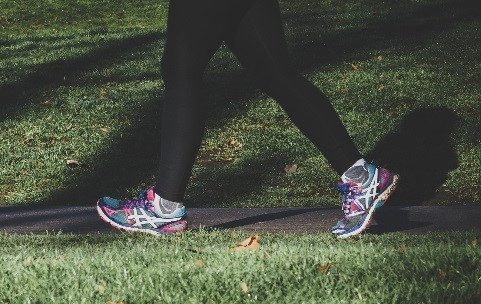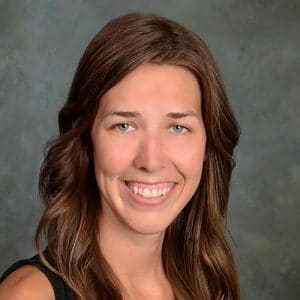3 Things We Realize When Counting Our Steps
This spring, our company participated in the West Michigan Walking Challenge put on by Terry Berry. We competed against other local companies for average steps taken by employees each week for six consecutive weeks. About 20 Hulst Jepsen employees agreed to participate and show the others how it was done.

Being a (slightly competitive) participant and having never counted my daily steps prior to this experience, I anticipated that our company was going to blow all of the others out of the water. I borrowed a fit bit from a coworker and began the first day with a positive and incredibly motivated mindset that I was going to provide a fair contribution to the team and hit at least 12,000 steps each day.
This is how the first day went with my thought process:
7:00am—“I’m just getting my day started in the office, I shouldn’t have very many steps yet anyway.”
9:00am—“About 1,000 steps. It’s okay—I’ll just “step it up” this afternoon.”
12:00pm—“Time for lunch. I should likely walk while I eat at this point…is that even possible?”
3:00pm—Insert self pep-talk here
6:00pm—“Well, work may not have done it for me today, but the gym will definitely help me hit my goal.”
8:00pm—“Why am I sweating so much and yet my steps aren’t even in the 5 figures?”
10:00pm—*Imagine a tired person running in place in my tiny apartment kitchen while frantically glancing down at her wrist every 15 seconds*
Upon going to bed that evening and reviewing my “step statistics” for the day, I got a reality check and realized this wasn’t going to be as easy as I had previously convinced myself.
Throughout the challenge, I (and I believe some of my fellow coworkers) had a few realizations, as follows:
1. It is a personal commitment to move. In today’s society, you have to be intentional about moving your body on a regular basis. Many of our jobs often require us to sit for prolonged periods of time in our cars, at our desks, or in meetings. Many of us work long hours and are confined to small spaces with limited time for breaks. Nobody is standing over your shoulder to remind you when to stand up and walk around or when you should park at the furthest end of the grocery store parking lot. These are choices that you have to make independently.

2. Our bodies need movement. Within the past few years there has been a push for more physical activity in younger generations, but I have also been witness to advertisements suggesting that the older generations must be the role models. The US Department of Health and Human Services recommends that American adults get an average of 150 minutes of moderate or 75 minutes of vigorous aerobic exercise spread out throughout the week. (1) With that being said, recent publications from the United States Bone and Joint Initiative report that, “Arthritis and other rheumatic conditions are a leading cause of disability among US adults, and [have been] the most common cause of disability among US adults for the past 15 years.” (2) Which brings me to my next point…
3. Aches and pains, minor or major, can severely limit your movement patterns on a daily basis. According to MMWR Morb Mortal Weekly Reports “around 44% of adults with doctor-diagnosed arthritis also had arthritis-attributable activity limitations in 2013-2015.” (3) These symptoms can make it harder to get your fit bit to vibrate upon reaching your daily goal.
None of these aforementioned statistics about the “A” word are meant to be scary or deterring to you as a reader, but are there to provide a source of education that although arthritis is one of the most common forms of pain and sources of activity limitations, movement can provide the best relief for those achy joints. So get to stepping!
With all of that being said, if you are having trouble moving because of an ache or pain that is new or old, please contact us. If you don’t have any symptoms, but want some advice on how to safely jump start some healthy movement or your return to recreational activities, contact us. We’re happy to work with you at any of our 12 locations and get West Michigan closer to reaching their daily step goals!
1. 2008 Physical Activity Guidelines for Americans. U.S. Department of Health and Human Services. https://health.gov/paguidelines/. Accessed May 30, 2017.
2. United States Bone and Joint Initiative: The Burden of Musculoskeletal Diseases in the United States (BMUS), Third Edition, 2014. Rosemont, IL. Accessed on May 30, 2017.
3. Barbour KE, Helmick CG, Boring M, Brady TJ. Vital Signs: Prevalence of Doctor-Diagnosed Arthritis and Arthritis-Attributable Activity Limitation – United States, 2013-2015. MMWR Morb Mortal Wkly Rep. 2017 Mar 10;66(9):246-253. doi: 10.15585/mmwr.mm6609e1. PubMed PMID: 28278145.
